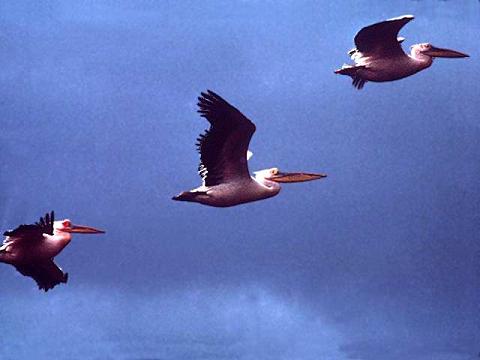
 |
|
|
|---|
People often divide animals into various groups based on certain similarities the animals share.
For example, some animals can be kept as pets, but others are wild. Arranging animals according to their similarities is a handy way of remembering and understanding them.
Some common ways of grouping animals. Animals can be grouped in many ways. They can be arranged according to whether they live on land or in water.
Animals that live on land are known as terrestrial animals. They include cats, dogs, lizards, mice, and worms. Animals that live in water are called aquatic animals. They include eels, fish, lobsters, octopuses, and whales.

Animals can be arranged by the number of legs they have. Dogs, frogs, and lizards have four legs. Bats and birds have two legs. Insects have six legs, and spiders have eight. Snakes and worms have no legs.
Another way to group animals is according to how they move. Bats, most birds, and many insects fly. Whales, fish, and squid swim. Snakes and worms crawl. Antelope and cheetahs run. Frogs, kangaroos, and rabbits hop. Some animals are cold-blooded, and others are warm-blooded.
The bodies of cold-blooded animals are warm when their surroundings are warm and cool when their surroundings are cool. Warm-blooded animals, on the other hand, almost always have the same body temperature, regardless of the warmth of their surroundings.
Birds, mammals (animals whose babies drink the mother's milk), and a few species of fish and insects are warm-blooded. All other kinds of animals are cold-blooded. Animals are also commonly divided into groups according to whether they have backbones. Invertebrates do not have backbones, but vertebrates do.

The vast majority of animals are invertebrates. They include clams, insects, jellyfish, sea urchins, snails, spiders, sponges, and worms. Birds, fish, mammals, and reptiles are vertebrates. So are amphibians-frogs, salamanders, and other animals that spend part of their lives in water and part on land. The scientific classification of animals involves grouping animals according to the biological relationships among them. This orderly arrangement of animals depends in part on the features the animals share.
In general, the more features they share, the more closely they are related. However, the scientific classification of animals is based mainly on the belief that certain animals share a common ancestor. Animals with a more recent common ancestor are more closely related than those who share an ancestor further back in time. In a somewhat similar way, brothers and sisters are more closely related than are cousins. Brothers and sisters share parents.
First cousins share grandparents. In classifying animals, zoologists (scientists who study animals) divide them into ever-smaller groups that have more and more features in common. The largest group is the kingdom Animalia itself, which includes all animals. Next, each animal is placed in a group called a phylum. Each phylum is divided into groups called classes. The classes are broken down into orders, and the orders into families.
The families are split into genera, and the genera into species. The singular form of genera is genus, but the word species may be either singular or plural. Among the animals that scientists have classified are about 13,000 species of flatworms; 50,000 species of clams, oysters, and other mollusks (soft-bodied animals, most of which have a hard shell); 1,000,000 species of insects; 30,000 species of spiders; 21,000 species of fish; 4,000 species of amphibians; 6,500 species of reptiles; 9,700 species of birds; and 4,500 species of mammals.
Each species belongs to one phylum, one class, one order, one family, and one genus. For example, tigers belong to the kingdom Animalia, the phylum Chordata, the class Mammalia, the order Carnivora, the family Felidae, and the genus Panthera. They are members of the species Panthera tigris. Lions are related to tigers. They belong to the same kingdom (Animalia), phylum (Chordata), class (Mammalia), order (Carnivora), family (Felidae), and genus (Panthera) as tigers. But lions are classified in a different species-Panthera leo, also written simply as P. leo.
|
|---|
.. |
|
||||||||||||
|---|---|---|---|---|---|---|---|---|---|---|---|---|
|
|
||||||||||||